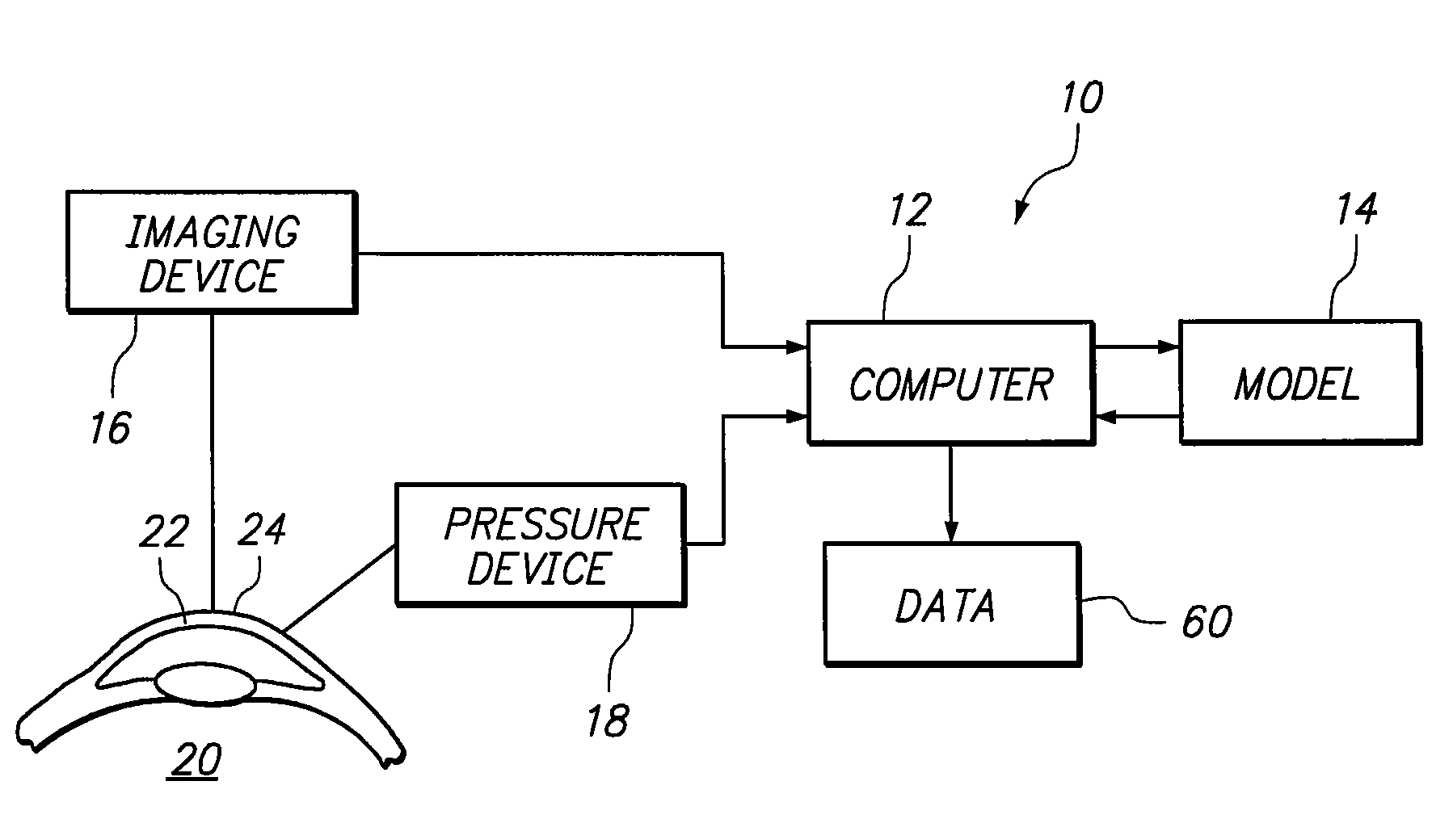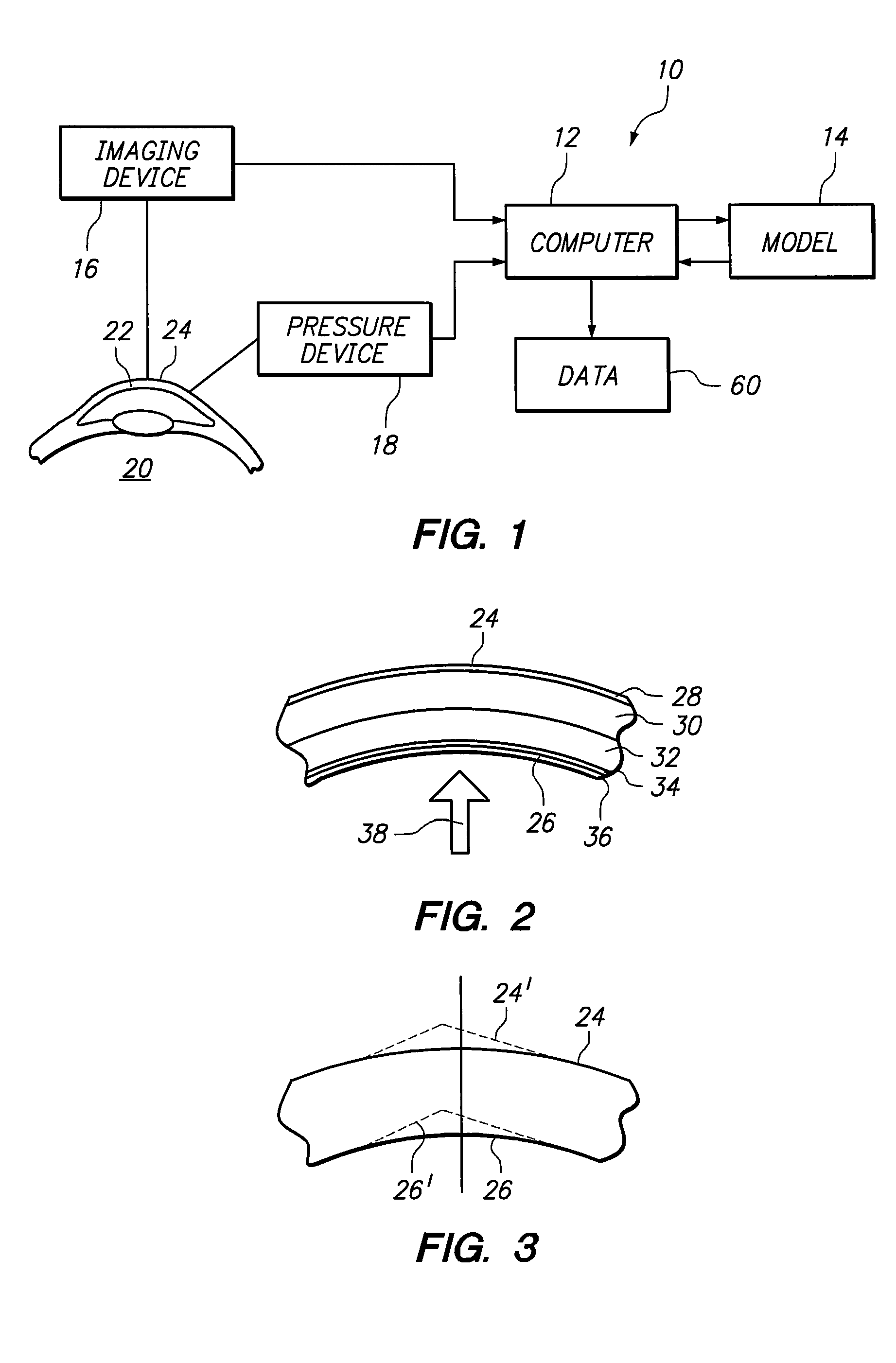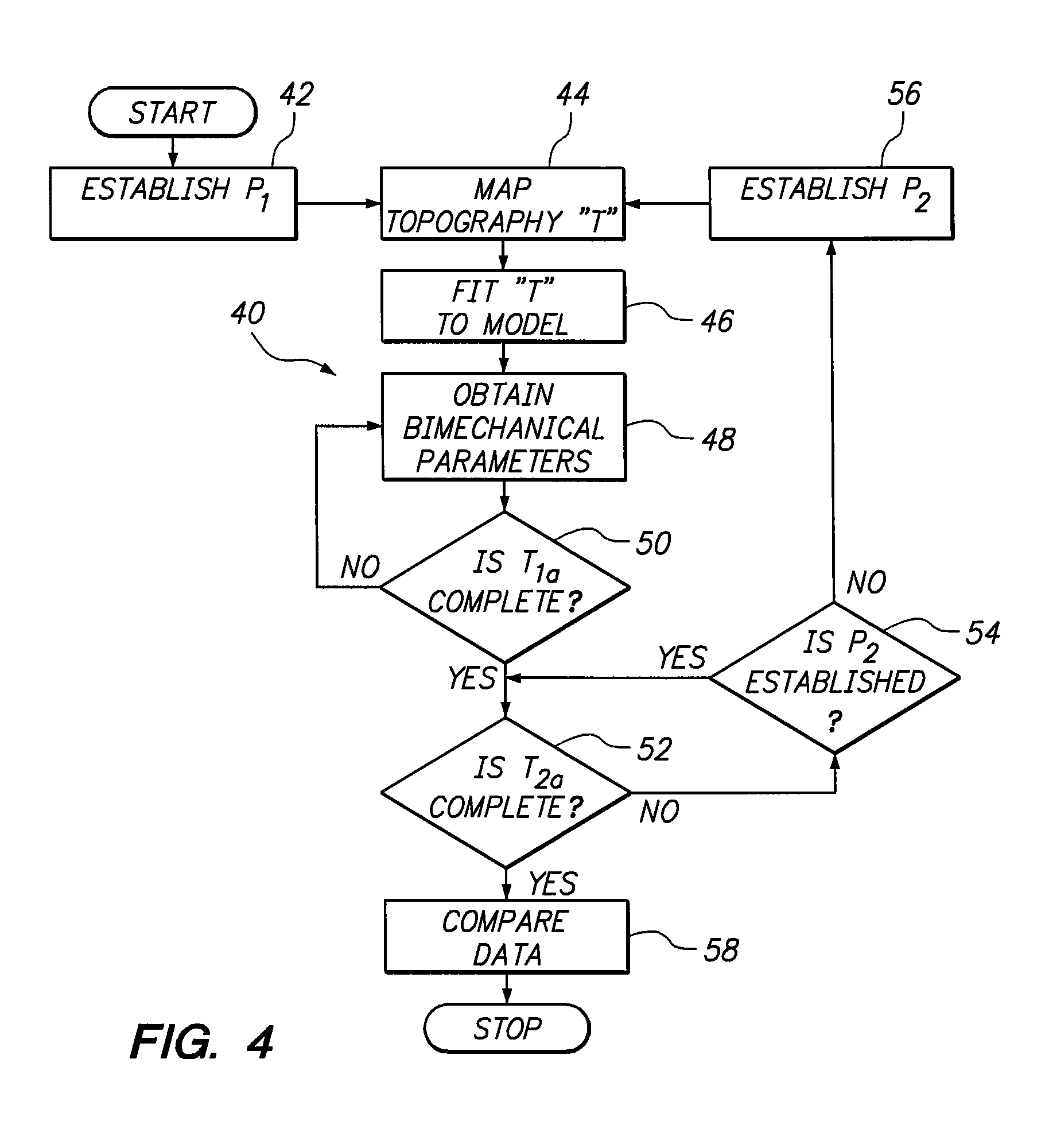Finite element model of a keratoconic cornea
a keratoconus and end-element model technology, applied in the field of ophthalmic diagnostic equipment and procedures, can solve the problems of difficult, difficult, if not impossible, to locate and directly measure the biomechanical stresses and strains, and the keratoconus is not easily detected, so as to improve the accuracy and enhance the resultant topography measurement
- Summary
- Abstract
- Description
- Claims
- Application Information
AI Technical Summary
Benefits of technology
Problems solved by technology
Method used
Image
Examples
Embodiment Construction
[0017]Referring initially to FIG. 1, a system for diagnosing keratoconus in accordance with the present invention is shown and is generally designated 10. As shown, the system 10 includes a computer 12 that is electronically interconnected with a mathematical model 14. Also interconnected with the computer 12 are an imaging device 16 and a pressure device 18. As indicated in FIG. 1, the imaging device 16 and the pressure device 18 are positioned to interact with an eye 20 of a patient (not shown). More particularly, the devices 16 and 18 are positioned to interact with the cornea 22 of the eye 20.
[0018]In FIG. 2, a cross section of the cornea 22 shows that, anatomically, the cornea 22 has five different identifiable layers of tissue. Between the anterior surface 24 and the posterior surface 26 of the cornea 22, and going in an anterior-posterior direction, the layers of the cornea 22 are: epithelium 28; Bowman's membrane 30; stroma 32; Descemet's membrane 34; and endothelium 36. Str...
PUM
 Login to View More
Login to View More Abstract
Description
Claims
Application Information
 Login to View More
Login to View More - R&D
- Intellectual Property
- Life Sciences
- Materials
- Tech Scout
- Unparalleled Data Quality
- Higher Quality Content
- 60% Fewer Hallucinations
Browse by: Latest US Patents, China's latest patents, Technical Efficacy Thesaurus, Application Domain, Technology Topic, Popular Technical Reports.
© 2025 PatSnap. All rights reserved.Legal|Privacy policy|Modern Slavery Act Transparency Statement|Sitemap|About US| Contact US: help@patsnap.com



